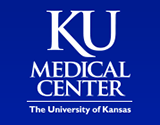Use of a Novel Contact Force Sensing Catheter for AF Ablation - Impact of TactiCath on Dormant Conduction Across the Pulmonary Veins
| Status: | Not yet recruiting |
|---|---|
| Conditions: | Atrial Fibrillation |
| Therapuetic Areas: | Cardiology / Vascular Diseases |
| Healthy: | No |
| Age Range: | 18 - 80 |
| Updated: | 4/21/2016 |
| Start Date: | July 2016 |
| End Date: | December 2018 |
| Contact: | Donita Atkins |
| Email: | datkins2@kumc.edu |
| Phone: | (913) 588-9714 |
The purpose of this study is to collect information about the success rate of atrial
fibrillation (AF) ablation procedures using the contact force data from the TactiCath Quartz
ablation catheter.
fibrillation (AF) ablation procedures using the contact force data from the TactiCath Quartz
ablation catheter.
Atrial fibrillation is a condition in which the upper chambers of the heart (the atria)
begin to quiver (shake rapidly with small movements) instead of beating in a normal rhythm.
This condition can cause blood to remain in the atria instead of moving to the lower heart
chambers. AF can cause a number of other health problems and can decrease your quality of
life.
Treatments for AF can include surgery, implantable devices, ablation and medication, to name
a few. An ablation is a procedure that creates scar tissue in the heart to interrupt
irregular heart rhythms and prevent them from coming back. The ablation procedure uses tools
called catheters to treat the AF. Ablation catheters are thin, flexible plastic tubes that
use electrical energy to create scars in the heart.
The amount of force applied to the heart tissue where the catheter touches (called the
contact force) might help determine the success of the ablation procedure. This study would
help to determine whether or not the contact force makes a difference in an effective
ablation. You will be tested on both sides, at the end of the procedure to see if any
problem persists.
Participants will be in this study for about 3 months. All visits in this study will
correspond to standard of care visits.
begin to quiver (shake rapidly with small movements) instead of beating in a normal rhythm.
This condition can cause blood to remain in the atria instead of moving to the lower heart
chambers. AF can cause a number of other health problems and can decrease your quality of
life.
Treatments for AF can include surgery, implantable devices, ablation and medication, to name
a few. An ablation is a procedure that creates scar tissue in the heart to interrupt
irregular heart rhythms and prevent them from coming back. The ablation procedure uses tools
called catheters to treat the AF. Ablation catheters are thin, flexible plastic tubes that
use electrical energy to create scars in the heart.
The amount of force applied to the heart tissue where the catheter touches (called the
contact force) might help determine the success of the ablation procedure. This study would
help to determine whether or not the contact force makes a difference in an effective
ablation. You will be tested on both sides, at the end of the procedure to see if any
problem persists.
Participants will be in this study for about 3 months. All visits in this study will
correspond to standard of care visits.
Inclusion Criteria:
- Patients undergoing an initial AF ablation procedure
- Able to sign informed consent and complete the 3 month follow up
Exclusion Criteria:
- Severe COPD and is unable to receive adenosine therapy during the procedure
We found this trial at
1
site
University of Kansas Medical Center The University of Kansas Medical Center serves Kansas through excellence...
Click here to add this to my saved trials
